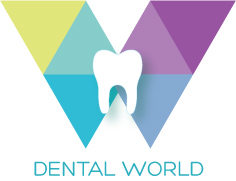
Recommendations
By the ADA (American Dental Association),
follow these steps to avoid cavities:
- Brush twice a day for two (2) minutes
with a fluoridated toothpaste. - Floss daily.
- Limit the FREQUENCY of how often you
sip and snack on sugary foods and drinks. - Drink water with fluoride as much as possible.
- Visit your dentist regularly for a
periodic exam and a professional
cleaning. - Ask your dentist if dental sealants
are right for you or your children.
Do I need a filling or a crown?!
Has your dentist ever told you that you have a large cavity that will require a crown instead of a filling? What are your treatment alternatives? An onlay could be your alternative to a crown. Let’s see why…
Cavities grow in size. The longer they are left in the teeth, the closer the move towards the nerve. Teeth have pointy protuberances called cusps. When a large cavity undermines or grows under a cusp, the inner surface of the tooth becomes mushy and it does not provide support to the cusp and enamel in the surface. When you start chewing, the tooth might break. When cusps break or are undermined, we like to recommend crowns (or onlays) to prevent further breakdown.
How does an onlay compare to a cap? The onlay is an indirect (made in the lab) restoration similar in material (porcelain or gold) to a crown, that is cemented onto a tooth. A crown (cap) will protect ALL cusps but will be a less conservative treatment approach since the tooth needs further trimming to allow the restoration to fit circumferentially around the tooth. A good approach to dentistry: less is more; conservation of healthy tooth structure is my goal when removing large areas of decay and undermined parts of the teeth. This is the reason why I prefer to treat teeth with onlays vs. crowns (whenever possible). Taking a conservative approach decreases the chance of post-operative sensitivity, due to less tooth structure removed.
Moreover, conserving more tooth structure is imperative, since break-down over the years will ultimately happen due leaking and decay around the edges of old restorations. In order to replace a defective restoration more tooth structure will need to be removed to obtain sound, clean margins. If we remove extra tooth structure unnecessarily early on (i.e. doing a crown instead of an onlay), a second replacement for a restoration might not be possible and the tooth might be lost.
Less is more! If we treat a tooth with an onlay, when/if it fails in the far future, we can do a larger onlay, or be able to recommend a crown then. Whereas if we recommend a crown from the get-go, our options might be limited later on.
Regardless of the choice of treatment, both accomplish the same end which is protecting and preserving the natural tooth. Discuss your options with your dentist, as well as the pros/cons involved with each choice.
Restoration: Refers to the process of replacing the missing tooth structure (due to decay or fracture) directly or indirectly (chairside or using a lab, respectively). Different types of restorations exist such as white fillings, silver fillings, onlays, inlays, crowns, bridges, implants, etc.
Disclaimer: This article, as with any other written article by the editor of Dental World blog site, is not a “scientific article,” but an opinion blog. Although I may refer to scientific information or concepts, the information is nonetheless presented as “opinion.”



